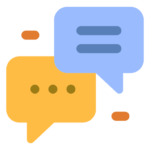Hi there, Business Owner!
In the previous part of this blog-post, we discussed the 5 steps in the sales budget preparation process.
To have a clear division of your customer base and products, we have come up with 5 buckets that your sales bucket should be divided into.
The 5 customer-product scenarios you need to divide your budget in are:
Customer | Product |
Existing | Existing |
Existing | Other |
Existing | New |
New | Existing |
New | New |
We spoke about the significance of each bucket and how each bucket will help you devise a sales strategy plan.
So, now that you have mastered sales budget preparation, what is the next step?
The next key step is to set specific targets for your sales team and establish a rewarding system.
Think of this as setting a clear goal for your team to aim at and offering them an enticing reward as motivation. The catch is to ensure that these targets align seamlessly with your sales strategy plan and overall business objectives. This step is pivotal because it directs your sales team’s efforts toward what you aim to achieve.
Target Allocation
Sales budget preparation is a crucial pre-cursor to allocating targets. It will help you allocate bucket-wise targets. The process of target allocation is a crucial component of preparing an incentive model and helping you execute your sales strategy effectively.
This phase involves distributing sales targets among your sales team and designing a structured system of rewards to motivate and align their efforts with your business goals. Let’s delve into the details of this process:
- Scenario-Based Targets: Distribute sales targets based on the specific scenarios outlined earlier. Assign a higher weight to scenarios that offer higher growth potential or are strategically important.
- Performance Metrics: Define key performance indicators (KPIs) for each scenario. These metrics can include revenue generated, customer acquisition rate, cross-selling success, and market penetration.
Strategic Target Division
Imagine you have a sales target of Rs.20 lakhs for Product X. By breaking down this target into segments for existing and new customers, you’re creating a more focused sales strategy plan and a more manageable path to achieving success.
Your sales target for Product X is Rs.20 lakhs.

Benefits of Dividing Targets:
- Enhanced Accountability:
By setting separate targets for existing and new customers, you empower your sales team with a heightened sense of accountability. Each member is responsible for a specific part of the target, making them more committed to achieving their respective goals. This accountability drives them to work more efficiently, strategize better, and take ownership of their sales efforts.
- Clear Division of Work and Informed Hiring Decisions:
Dividing targets clarifies roles within the sales team. This clarity aids in resource allocation and workload distribution. It also guides your hiring decisions. For instance, you may realize the need for more representatives specialized in acquiring new customers or focusing on retaining and upselling to existing ones. This clear division of labour ensures that every team member’s strengths are utilized optimally.
- Better Tracking and Incentive Visibility:
With distinct targets for existing and new customers, tracking performance becomes more precise and insightful. You can easily identify which segments are meeting their targets and which need adjustments. This data-driven approach enables you to fine-tune strategies and allocate resources where they’re most effective. Moreover, this targeted tracking allows for tailored incentive structures, ensuring that rewards are aligned with the actual contributions of each team member.
- Strategic Focus:
Dividing targets encourages a strategic approach to sales. Your team can allocate resources, time, and effort based on the specific needs of each customer segment. This focus enhances efficiency and ensures that sales efforts are aligned with the unique characteristics and preferences of existing and potential customers.
- Motivated Sales Team:
When salespersons have well-defined and achievable targets, they are more likely to stay motivated and engaged. Smaller, attainable goals provide a sense of accomplishment, boosting morale and job satisfaction. This motivation translates into improved performance and a more positive work environment.
Incentives Model
Craft an incentive model that motivates your sales team to achieve targets. For instance:
- Existing Customer Scenarios: Offer commission hikes for surpassing upselling or cross-selling targets.
- New Customer Scenarios: Provide bonuses for achieving customer acquisition goals.
- New Product Scenarios: Offer tiered incentives that increase as the product gains traction.
Measuring Variance & Ensuring Accountability
This step involves monitoring your progress, analysing run rates, and upholding accountability:
- Individual run rate analysis: Regularly assess your sales performance against the set targets related to the employee or the product.
Calculate the sales run rate with the following formula:
Sales run rate = ( Sum of sales till date) x 100
——————————————–
Time period
Compare the achieved results to the planned targets. This provides insights into whether your sales strategy plan and your efforts are on track or need adjustments.
- Variance Analysis: Identify any discrepancies between actual results and projected targets. Analyze the reasons for overachievement or underperformance in different scenarios.
- Adaptation: Reallocate resources, revise targets, or modify incentives to address emerging trends or challenges.
- Accountability Mechanisms: Foster a culture of accountability by:
- Regular Reviews: Conduct frequent performance reviews with your sales team to discuss achievements and challenges.
- Performance Transparency: Share performance data across the organization, encouraging a sense of responsibility.
- Learning from Success and Failure: Encourage open discussions about both successful outcomes and missed targets to promote learning and growth.
- Continuous Improvement: Leverage insights gained from run rate analysis to refine your strategies. Recognize and reward individuals or teams that consistently meet or exceed targets.
Remember, every rupee earned begins with an effective sales strategy plan; the rest is meticulous computation. So, embrace the power of sales in shaping your budget, and watch your business flourish in a competitive ecosystem.
Confused about how to implement these strategies in your business?
Don’t worry, we’ve got you!
At Contetra, we have worked with 125+ business owners to — evaluate their sales functions, prepare their business plan, set budgets, remove bottlenecks, and implement other strategies to take their business to new heights!
Set up a non-chargeable exclusive call with our team of strategic consultants who will give you effective solutions!
Feel free to book a slot here for a personal one-on-one review with one of our business consultants: https://calendly.com/reachout-_g/30min?month=2023-06














